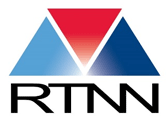RTNN has also worked with educators to develop nano-themed lesson plans aimed at K-12 students: Lesson Plans Created by RET Participants
Educators who participated in RTNN’s Research Experience for Teachers program have created a variety of lesson plans, including several that utilize RTNN instruments.
Mystery Molecules: Identifying Materials with Nanoscale Characterization Tools (High School)
Novel materials are currently being developed for numerous applications. To test and characterize these materials, scientists use a number of different analytical tools. In this lesson plan, students will be given several similar looking materials and be asked to identify them by observing them at the macro-, micro-, and nano- scales.
Achoo! Pollen Does More than Make Us Sneeze (Middle School)
Harness the power of a scanning electron microscope to let students see that pollen is more than just the yellow dust that makes us sneeze sometimes! Students will collect their own pollen samples and sending them to our labs where we will take images of them with the scanning electron microscope.
Photolithography: Patterning with Light (High School)
Photolithography is a key technology that brought cell phones and computers into our daily lives. This lesson plan will use Sunprint® paper to demonstrate photolithography. Students will learn about the adsorption and emission of light and photolithography utilizing Ultraviolet (UV) light induced chemical reactions.
The Petnapping of Maya – A Forensic Lesson Plan (Elementary School)
This is a forensic lesson plan for grades 2-4. It is designed as a fun activity while developing observational and reasoning skills.
Gold Nanoparticle Synthesis and Characterization (High School)
Nanoparticles are used in all kinds of things you interact with on a daily basis including sunscreens, antibiotic treatments, solar cells, and cosmetics. We invite you to synthesize gold nanoparticles in your lab classroom and characterize those nanoparticles with a variety of analytical instrumentation in RTNN facilities.
Nano in Nature, Mimicking Geckos (High School)
Geckos are able to climb up walls and walk on ceilings. This is due to the unique hierarchical structure of their feet. Scientists have been studying geckos to better understand the creatures’ ability to “stick” on walls. In this lesson plan, students will learn about biomimicry, the imitation of the models, systems, and elements of nature for the purpose of solving complex problems. Students will also get to make and test “gecko tape” and create their own design.
Visit one of our partners, SciREN, to find out more about networking events where researchers share lesson plans with educators.
We have also created one page summaries of several immersive lab experiences, which include visits to RTNN facilities.

